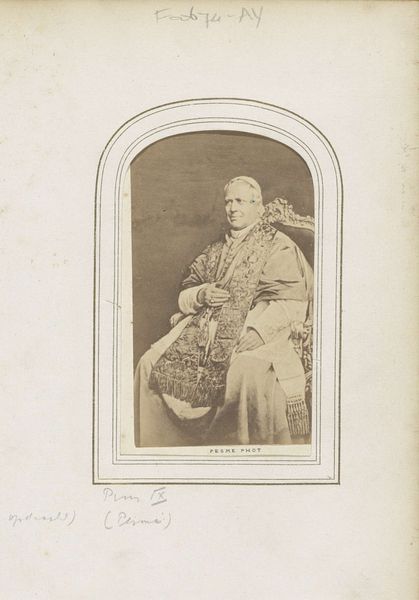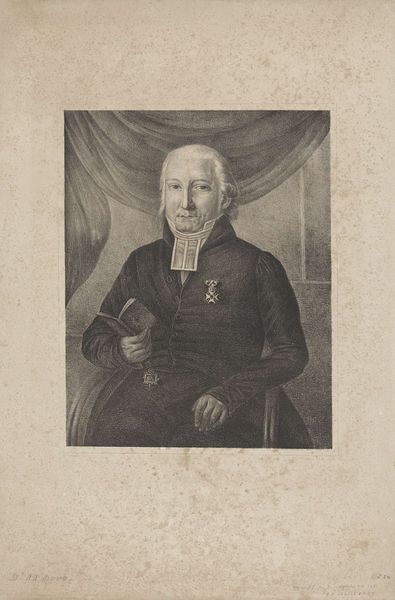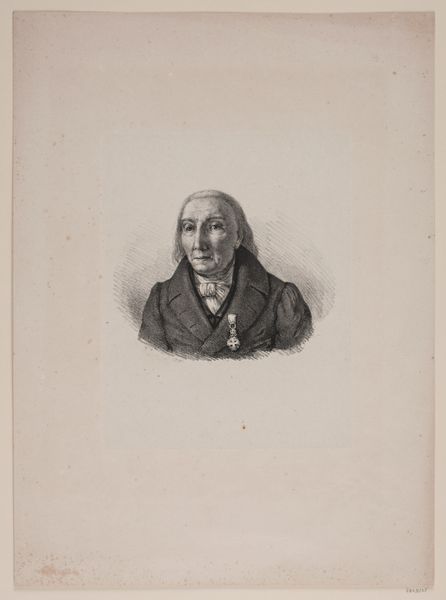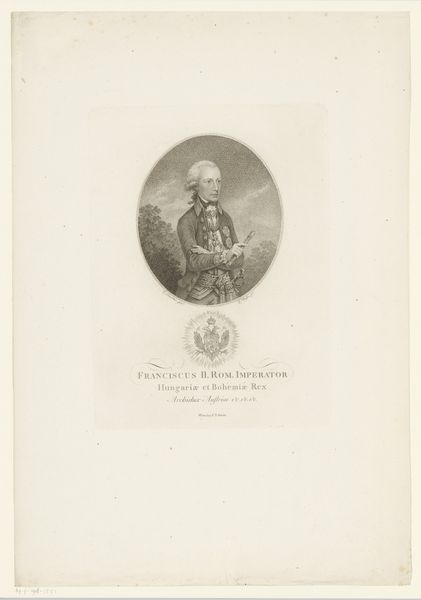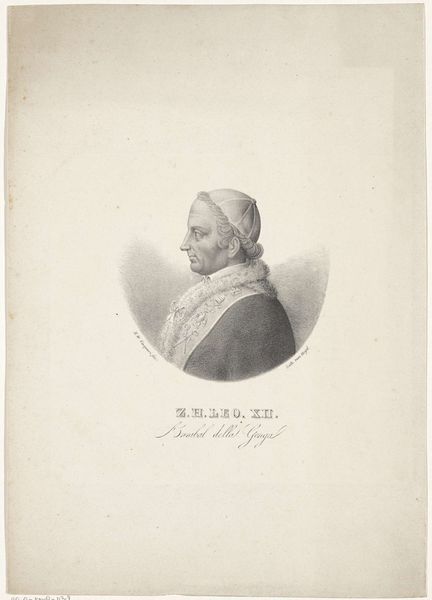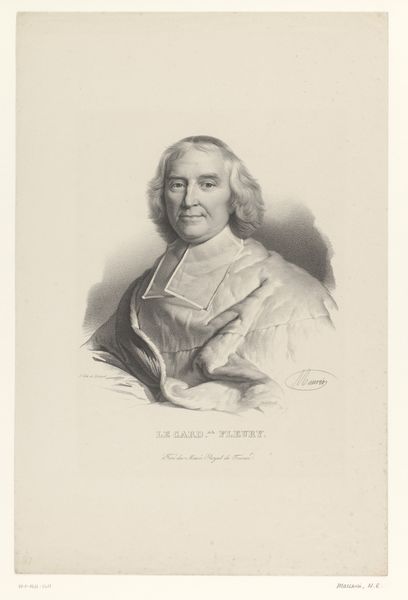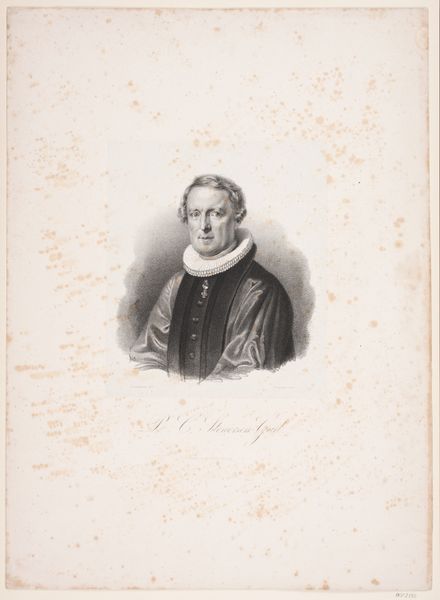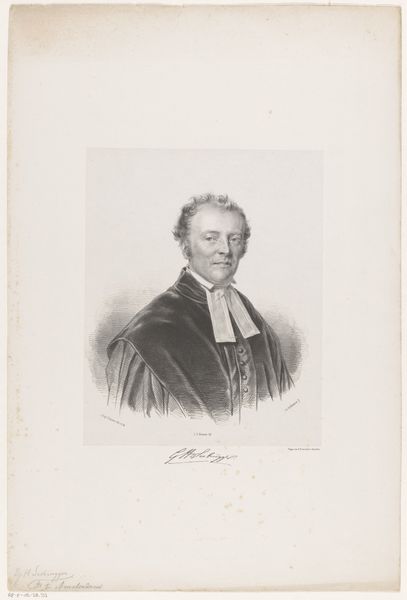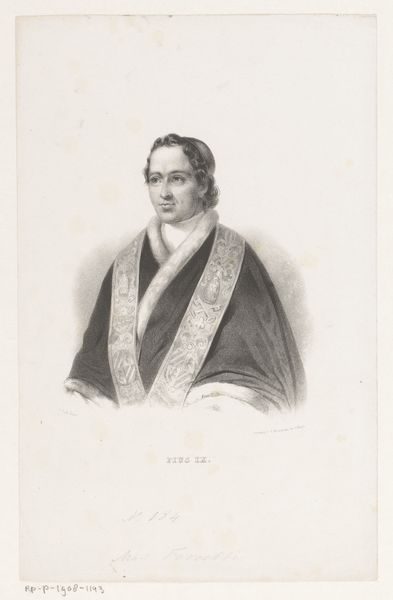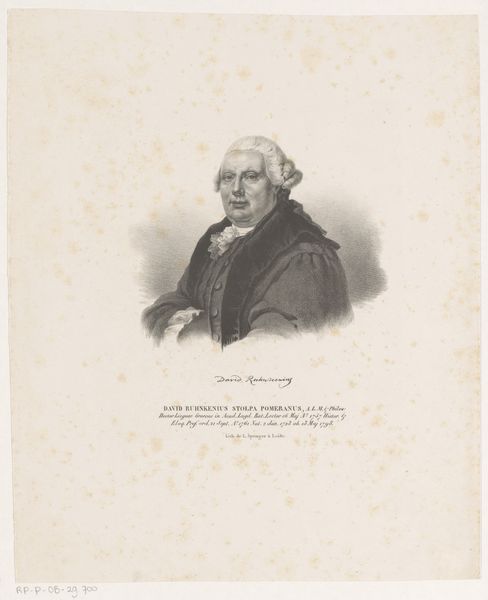
#
portrait
# print
#
historical photography
#
pencil drawing
#
19th century
#
history-painting
Dimensions: height 615 mm, width 468 mm
Copyright: Rijks Museum: Open Domain
Curator: Here we have a "Portret van Johan Maurits, graaf van Nassau-Siegen," a print made sometime between 1843 and 1876, attributed to Adolf Burger. Editor: There's an imposing feel to it, almost severe. The high collar and the gaze really communicate a sense of power and formality, despite being just a print. Curator: Right. The technique here is interesting. It seems like a reproductive print, probably based on an earlier painting. You can see the details in the cross-hatching and stippling that create the tonal variations and textures—especially in the fur and the ornate clothing. Reproducing such a likeness democratizes access to portraiture. Editor: Absolutely. Think about who Johan Maurits was: a colonial administrator in Dutch Brazil deeply implicated in the exploitation of enslaved people. Seeing his portrait produced and disseminated widely – it makes you consider how the print functions to cement a legacy. Was this intended as an instrument of glorification and a tool to sanitize the past? Curator: That’s a valid question. The materials, though modest—paper and ink—became tools in perpetuating this image. What were the circulation numbers? Who was this print aimed at? It all adds layers to how we understand its meaning. Editor: And the way he's rendered is worth exploring. Consider how the print emphasizes the symbols of status – the medals, the clothing, the subtle swagger—everything performs the authority of a figure whose actions had devastating real-world impact for the Indigenous and enslaved populations. It is vital to highlight the tension here between art, representation, and ethical responsibility. Curator: I agree. There's definitely a tension when viewing a technically proficient piece used to glorify problematic figures from history. But even understanding the material choices and how they contribute to meaning, helps us deconstruct its persuasive power, right? Editor: It’s an invitation for us to reflect not just on his likeness but the structural forces that continue to perpetuate inequality today. Curator: Absolutely, and understanding the prints circulation and consumption offers insight to this historical role. Editor: Ultimately, confronting art like this compels us to reckon with complicated pasts, interrogate existing narratives and imagine pathways towards a more just future.
Comments
No comments
Be the first to comment and join the conversation on the ultimate creative platform.
